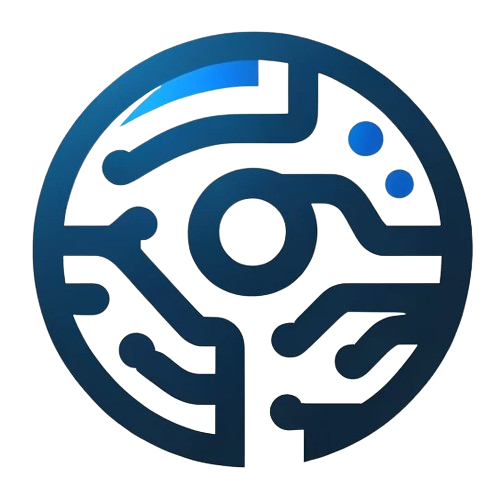Introduction: The Call for Inclusion in Software Development
Picture this: You’re designing a bridge that connects two communities. Would you build it with steps that some people couldn’t climb? Of course not! In the digital world, web accessibility is the equivalent of that bridge. It’s about ensuring that everyone, regardless of their abilities or disabilities, can access and use your software. Join us on a journey to explore the world of web accessibility in software development, where inclusivity takes center stage.
What Is Web Accessibility and Why Does It Matter?
Web accessibility, often abbreviated as “a11y” (the “11” representing the 11 omitted characters), is the practice of designing and developing websites and applications in a way that ensures equal access and usability for all individuals, regardless of their physical or cognitive abilities. Here’s why it’s vital:
- Inclusivity: Web accessibility is a fundamental human right, ensuring that everyone can participate in the digital age.
- Legal Compliance: Many countries have laws mandating web accessibility. Non-compliance can result in legal consequences.
- Market Expansion: Accessible software can attract a more extensive user base, including those with disabilities.
Understanding Disabilities: The Audience for Accessibility
To design inclusively, it’s essential to understand the range of disabilities that web accessibility addresses:
- Visual Impairments: Including blindness, low vision, and color blindness.
- Hearing Impairments: Including deafness and hard of hearing.
- Motor Disabilities: Such as limited mobility or dexterity.
- Cognitive Disabilities: Including conditions like dyslexia and attention deficit disorders.
Web Content Accessibility Guidelines (WCAG): The Accessibility Blueprint
The Web Content Accessibility Guidelines (WCAG) are the internationally recognized standards for web accessibility. They provide a blueprint for creating accessible web content. WCAG is organized around four primary principles, known as the “POUR” principles:
- Perceivable: Information and user interface components must be presented in ways that users can perceive, regardless of their abilities.
- Operable: User interface components and navigation must be operable by any user.
- Understandable: Information and operation of the user interface must be understandable by all users.
- Robust: Content must be robust enough to work with current and future technologies.
Best Practices for Web Accessibility: The Inclusivity Checklist
Achieving web accessibility involves implementing a series of best practices. Here are some key guidelines:
1. Provide Alternative Text for Images
Ensure that all images have descriptive alt text. This helps users with visual impairments understand the content.
2. Use Semantic HTML
Use semantic HTML tags correctly to structure content. For instance, use headings (h1, h2, etc.) to create a logical hierarchy.
3. Ensure Keyboard Navigation
Make sure all interactive elements can be operated using a keyboard alone. Users with motor disabilities may rely on keyboards or alternative input devices.
4. Caption and Transcribe Media
Provide captions for videos and transcriptions for audio content. This benefits users with hearing impairments.
5. Implement ARIA Roles and Attributes
Use Accessible Rich Internet Applications (ARIA) roles and attributes to enhance the accessibility of dynamic content, such as web applications.
6. Test with Accessibility Tools
Leverage accessibility testing tools and browser extensions to identify and fix issues. Popular tools include Axe, WAVE, and the Accessibility Insights extension.
7. Focus on Color Contrast
Ensure sufficient color contrast between text and background elements, making content more accessible to users with visual impairments.
8. Design Responsively
Create responsive designs that adapt to different screen sizes and orientations, benefiting users with various devices and abilities.
9. Provide Skip Navigation Links
Include “skip to content” or “skip navigation” links at the beginning of web pages. These help screen reader users jump directly to the main content.
10. Offer Text Alternatives for Non-Text Content
For non-text content like infographics or charts, provide text-based alternatives or descriptions.
Quick Start Guide to Web Accessibility: Building Bridges of Inclusion
Ready to make your software more accessible? Here’s a quick start guide to get you going:
1. Familiarize Yourself with WCAG
Study the Web Content Accessibility Guidelines (WCAG) to understand the principles and success criteria for accessibility.
2. Conduct an Accessibility Audit
Use accessibility testing tools or hire an expert to conduct an audit of your software. Identify and prioritize issues.
3. Prioritize Accessibility in Design and Development
Integrate accessibility considerations into your design and development processes from the beginning.
4. Train Your Team
Educate your team members about web accessibility and its importance. Consider formal training or workshops.
5. Test with Real Users
Engage users with disabilities in usability testing to get direct feedback and insights.
6. Continuously Monitor and Improve
Web accessibility is an ongoing process. Regularly monitor and improve your software’s accessibility.
The Business Case for Web Accessibility: Beyond Compliance
Beyond the moral imperative of inclusivity, there’s a compelling business case for web accessibility:
- Wider Audience: Accessible software reaches a broader audience, potentially leading to increased revenue and market share.
- Enhanced Reputation: Demonstrating a commitment to inclusivity can enhance your brand’s reputation.
- Reduced Legal Risks: Compliant software reduces the risk of legal actions related to accessibility.
- Innovation: Embracing accessibility often fosters innovation, benefiting all users.
Conclusion: Building Bridges, Not Barriers
Web accessibility isn’t just about compliance; it’s about building bridges that connect people of all abilities to the digital world. By following best practices and prioritizing inclusivity, you can create software that welcomes everyone and empowers them to access information and services seamlessly. In the end, it’s not just about code; it’s about making the world a more inclusive and equitable place, one digital experience at a time.

